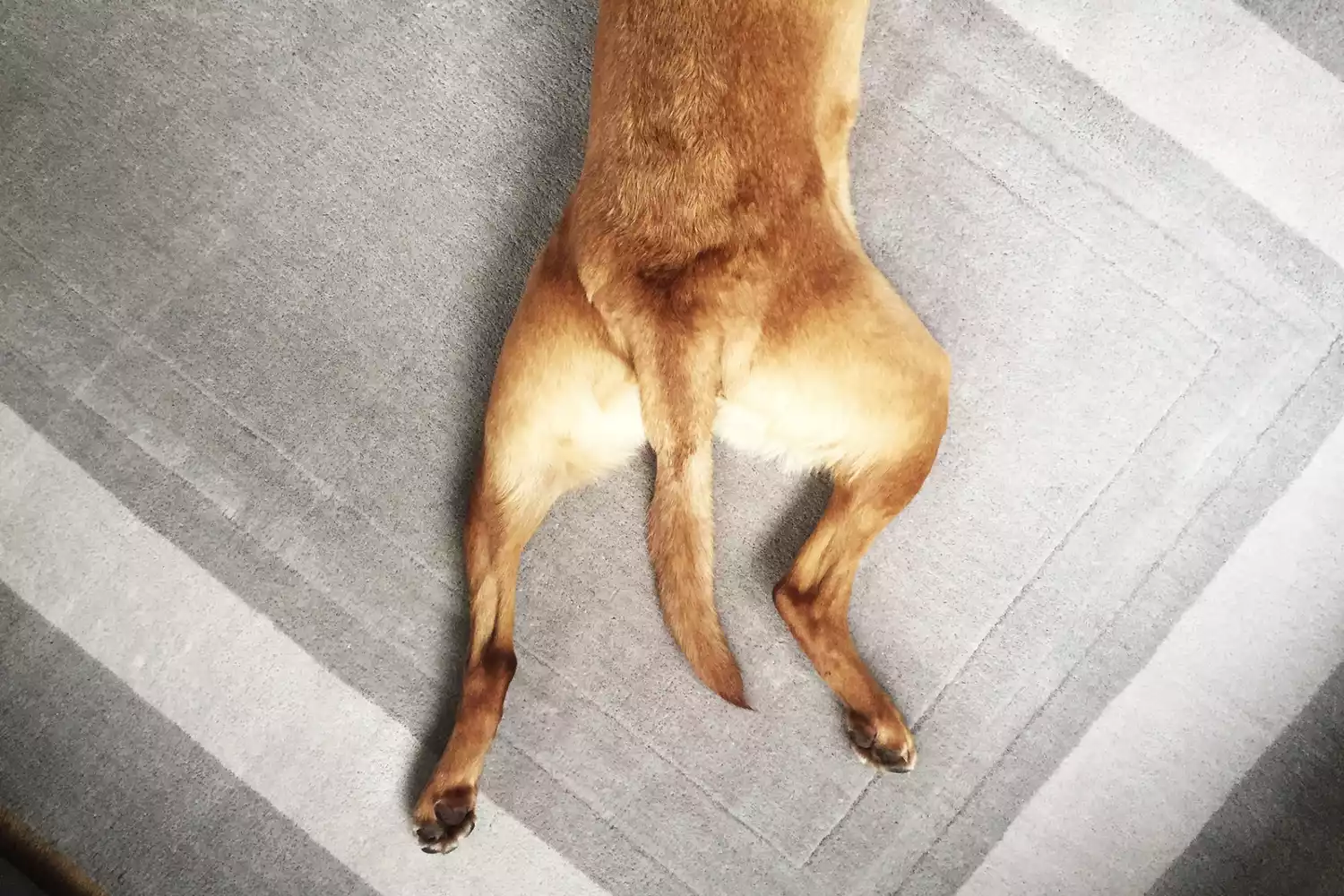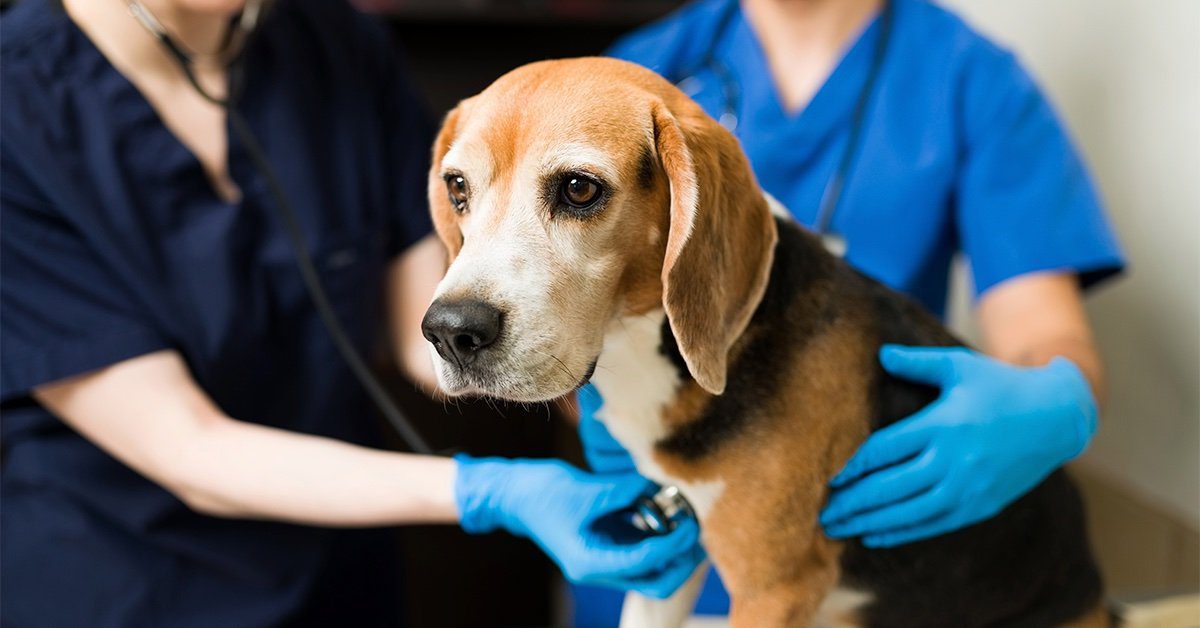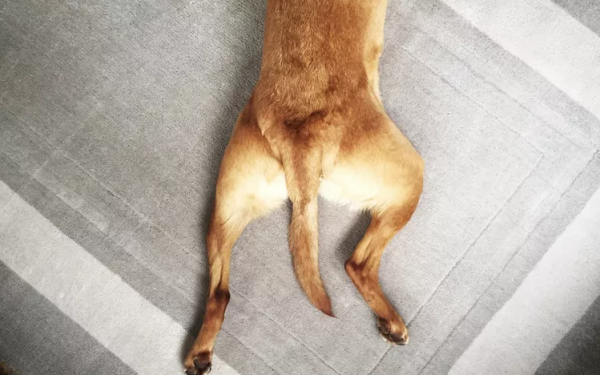Hip dysplasia in dogs is a common developmental condition in large and giant breed dogs. It’s caused by a hip deformity that results in joint laxity, or looseness, and can lead to pain, mobility issues, and osteoarthritis. Though the condition is present from a young age, many dogs won’t show clinical signs until they’re older. However, screening your pet for hip dysplasia early on can give you an opportunity to treat the deformed joint before it causes problems.
What is Hip Dysplasia?
Canine hip dysplasia occurs when a dog’s hip joint doesn’t develop as it should. The hip is a ball-and-socket joint, and if the two components don’t grow properly and at the same rate, it can result in a very loose, unstable joint.
This may not sound like a big deal, but according to the American College of Veterinary Surgeons, hip dysplasia in dogs can cause serious problems. When a dog moves around with a loose hip joint, it can cause permanent damage to the joint’s anatomy. If left untreated, dogs may develop osteoarthritis (also called degenerative joint disease) in the hip because the abnormal movement wears away cartilage and leads to the formation of scar tissue and bone spurs.

Genetics plays a central role in the development of canine hip dysplasia. Dogs can pass the condition to their offspring and large breed dogs are more prone to the disease. Commonly affected breeds include German shepherds, Rottweilers, golden retrievers, Saint Bernards, Labrador retrievers, and Newfoundlands.
However, any breed or mixed-breed can develop hip dysplasia, and breed isn’t the only risk factor. Puppies with a genetic predisposition for hip dysplasia are more at risk of developing the condition if they’re given more food than they need, resulting in faster than normal weight gain and growth. Heavy exercise is another risk factor in puppies.
Elbow Dysplasia in Dogs Can’t Slow Your Pup Down From Enjoying Life to the Fullest
What Are the Signs of Hip Dysplasia in Dogs?
Canine hip dysplasia can affect both young and old dogs, but not always in the same way. The Morris Animal Foundation divides the signs according to age of onset:
Juvenile (dogs younger than 18 months of age)
lameness (limping) in one or both of back legs
bunny-like hopping (dog holds its back legs together and hops instead of running normally)
difficulty getting up
clicking sound from hips when moving or getting up
shifting of weight to front legs
unable to exercise for long periods
Mature (dogs older than 18 months of age)
history of lameness (limping) in back legs
limping after exercising
loss of muscle mass in one or both of back legs
difficulty jumping or climbing
It’s important to note that while dogs can develop clinical signs as puppies, many don’t show any outward symptoms until they’ve lived with the condition for multiple years.

How is Hip Dysplasia Diagnosed?
Though the signs listed above can point to hip dysplasia, the condition is usually diagnosed via hip x-rays in both young and adult dogs, says Sarah Kirkwood, DVM, of Kansas City Veterinary Care in Kansas City, Mo. Your veterinarian may also use their hands to examine the hip and check for looseness.
What is the Treatment for Hip Dysplasia?
“There are many options available for treating hip dysplasia,” Kirkwood says, “and the best treatment depends on the age, condition, and lifestyle of the dog.” She typically recommends surgery for young dogs with long, active lives ahead, as it provides the most long-term comfort.
There are two common surgical options for dogs with hip dysplasia: total hip replacement, which involves implantation of an artificial hip joint, and femoral head ostectomy, in which the head and neck of the femur are removed and scar tissue forms to create a “false joint.”
For older dogs and those for whom surgery isn’t an option, Kirkwood says medical management at home can effectively manage pain. Hip dysplasia home treatment is also often recommended for dogs with mild to moderate disease.
“The most commonly used medications to help with joint pain from hip dysplasia are nonsteroidal anti-inflammatory drugs (NSAIDs),” she explains. However, it’s important to note that NSAIDs (like carprofen) can have significant side effects and must be closely monitored. “Supplements like glucosamine and chondroitin can help prevent cartilage breakdown in the joint, which can ease pain as well,” Kirkwood adds.
Other potential treatments include cold laser therapy, acupuncture, and physical therapy. Your veterinarian will work with you to determine the best options for you and your pet. Bear in mind that treatments often need to be adjusted over time, so be sure to follow your vet’s recommendations for follow-up visits.

How Can Hip Dysplasia in Dogs Be Prevented?
“One way to slow down the progression of the side effects of hip dysplasia is to keep your pet at a healthy weight, especially when he’s young,” Kirkwood says. “You can also have your dog screened for the condition at a young age using hip x-rays. These radiographs can help you determine how likely it is your dog will have problems in the future and whether you want to consider early surgical intervention.”
According to Kirkwood, hip dysplasia typically doesn’t affect a dog’s life expectancy, but it can. “If a dog becomes so painful that [he] no longer wants to get up and walk around,” she explains, “it can be very difficult to maintain a good quality of life—especially since most dogs who suffer from the condition are large breeds.”
If you have a large breed dog of any age, don’t hesitate to ask your veterinary team about the risks and signs of hip dysplasia. A veterinarian who knows your pet and can examine him in person is in the best position to offer information and advice.



